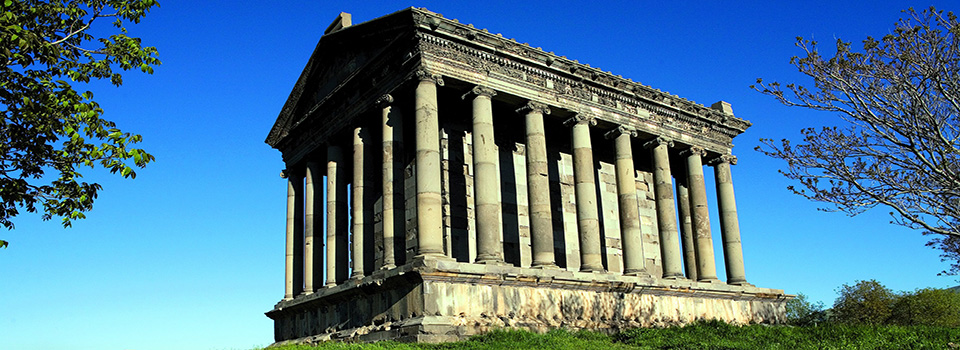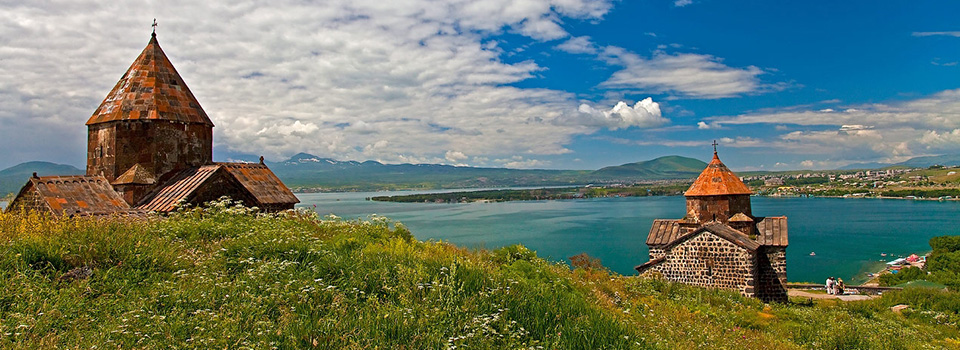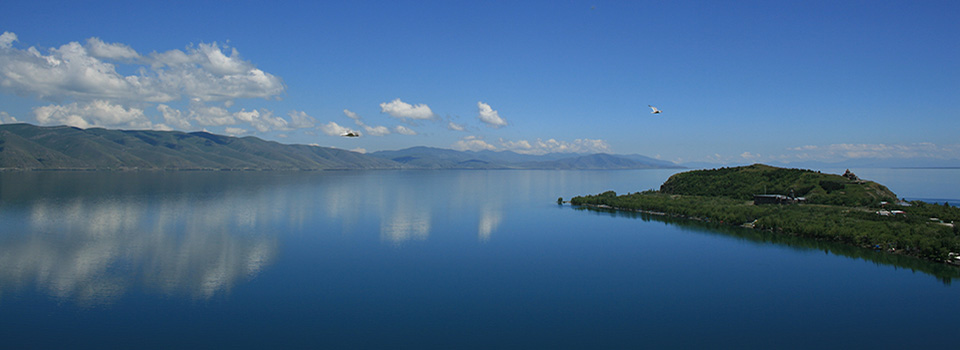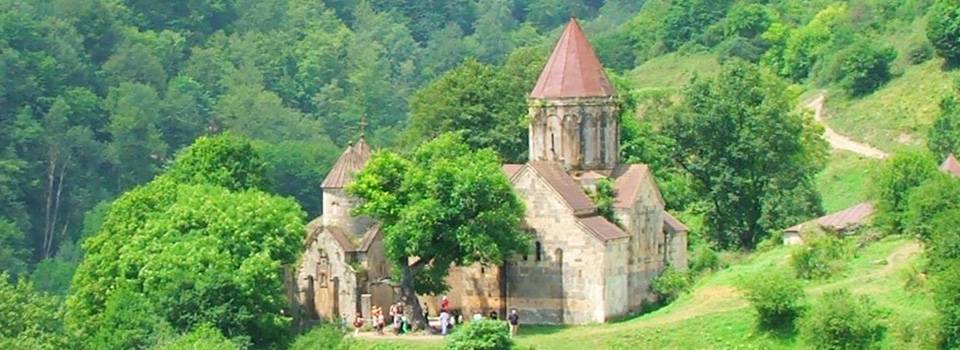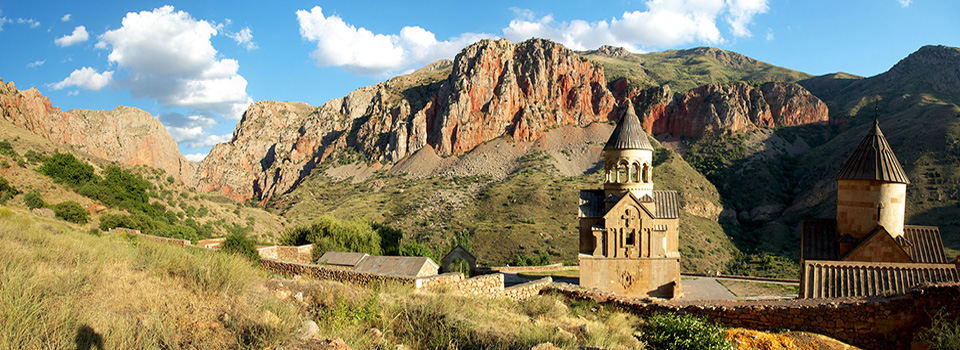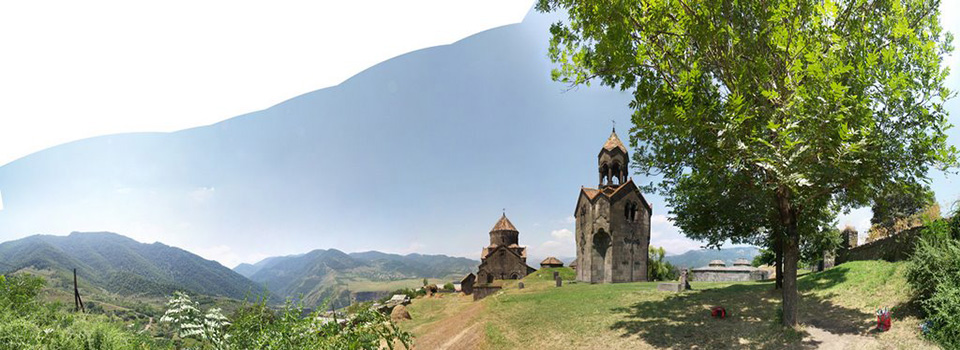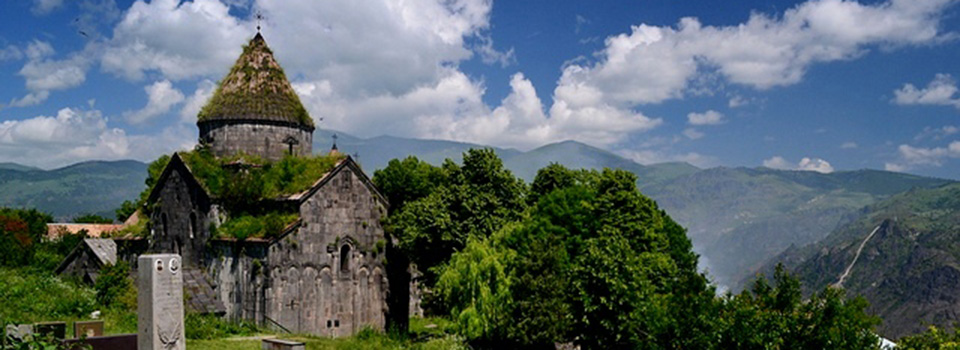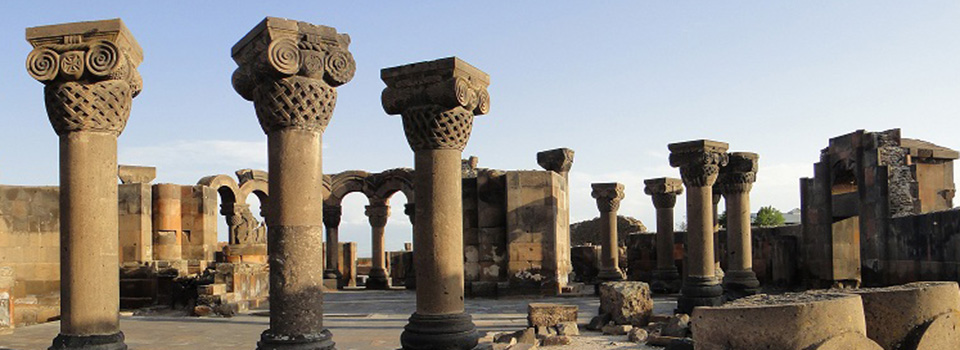Holidays
Armenian Official Holidays and Commemoration Days
January 1, 2 - New Year – is celebrated a whole week after the holiday which starts on December 31, by baking New Year cookies and with a table laden with food and different kind of sweets. During this week people exchange gifts with congratulations and their houses are open to welcome everyone.
January 28 – National Army Day – Armenian National Army was created in 1992
March 8 – Women’s Day – International Day of Women is very popular among Armenians. All women get presents and flowers from their family, friends and colleagues.
April 7 – Day of Maternity and Beauty – This day is also dedicated to women. Mothers receive gifts and flowers from their children. The period from March 8th to April 7th is considered the Month of Women.
April 24 – Commemoration Day of the Genocide Victims – Every year on April 24, Armenians all over the world commemorate Armenian Martyrs’ Day- the day on which they remember the 1,5 millions of victims of the 1915 genocide. In Armenia tens of thousand of people make a procession to Tsitsernakaberd to pay their respects to those who perished in this massive attempt to eliminate Armenian people.
May 9 – Victory and Peace Day – The Victory of World War II and the Memorial for its dead is an official holiday in Armenia. On this day the heroes of WW II march through the Republic Square.
May 28 –Day of the First Republic – In 1918 the Republic of Armenia restored its statehood after half a millennium of lost sovereignty.
July 5 – Constitution Day – The Constitution of the Republic of Armenia was adopted through a national referendum on July 5, 1995.
September 21 - Independence Day – The third Republic of Armenia announced the results of a national referendum on secession from Soviet Union in 1991.
December 7 – Day of Remembrance of Victims of the 1988 Earthquake- A devastating earthquake in 1988 killed thousand of people and destroyed most of the Republic’s infrastructure.
January 28 – National Army Day – Armenian National Army was created in 1992
March 8 – Women’s Day – International Day of Women is very popular among Armenians. All women get presents and flowers from their family, friends and colleagues.
April 7 – Day of Maternity and Beauty – This day is also dedicated to women. Mothers receive gifts and flowers from their children. The period from March 8th to April 7th is considered the Month of Women.
April 24 – Commemoration Day of the Genocide Victims – Every year on April 24, Armenians all over the world commemorate Armenian Martyrs’ Day- the day on which they remember the 1,5 millions of victims of the 1915 genocide. In Armenia tens of thousand of people make a procession to Tsitsernakaberd to pay their respects to those who perished in this massive attempt to eliminate Armenian people.
May 9 – Victory and Peace Day – The Victory of World War II and the Memorial for its dead is an official holiday in Armenia. On this day the heroes of WW II march through the Republic Square.
May 28 –Day of the First Republic – In 1918 the Republic of Armenia restored its statehood after half a millennium of lost sovereignty.
July 5 – Constitution Day – The Constitution of the Republic of Armenia was adopted through a national referendum on July 5, 1995.
September 21 - Independence Day – The third Republic of Armenia announced the results of a national referendum on secession from Soviet Union in 1991.
December 7 – Day of Remembrance of Victims of the 1988 Earthquake- A devastating earthquake in 1988 killed thousand of people and destroyed most of the Republic’s infrastructure.
National and Religious Holidays
January 6 – Christmas – is the Birthday of Christ and is celebrated by people all over the world. The Armenians celebrate this Christian holiday together with the Epiphany and go to churches in their neighborhoods and celebrate these two holidays all at once. According to tradition the major dish is considered to be fish and rice porridge.
February - St. Sargis Holiday – This holiday is very popular among Armenians, especially among young people and has been well preserved to date. There is no exact date for observing it and it is celebrated on a Saturday from January 18 to February 23, 63 days before Easter. On the night of the holiday young people, eat salty pies to dream at night. They believe that St. Sargis decides their fate and the person who gives them water to drink in their dreams will become their future spouse.
14 – Purification (Trndez) – According to religious custom this holiday is connected with the idea of coming forward to the Lord with fire, after 40 days of his birth. The Armenian Church celebrates it on February 14th - 40 days after January 6th, from which originates the religious name: coming forward to the Lord. The main ceremony of Trndez is a bonfire, which symbolizes the coming of spring.
February 19- April 7 – Period of Great lent - In the period of the Great Lent, people, refraining from bodily pleasures and sins get prepared for the Feast of the Glorious Resurrection of Our Lord Jesus Christ by means of abstinence and repentance. Both spiritual and moral and bodily abstinence are considered to be important. Our church fathers have called the period of the Great Lend as “Karasnordats”, as the period of fasting lasts 40 days.
April 1 - Palm Sunday (Tsarzardar – Tree Decorating) – is the penultimate Sunday holiday, and it is celebrated one week before Easter. The major part of the ceremony is devoted to the awakening of spring. Palm Sunday is also a holiday for young people. The customs, which are observed on the holiday, are a testament to this. On this people wear wreaths made of willow branches on their heads.
April – Easter – Easter is the favorite and the most anticipated holiday in the Christian world. Everybody greets each other on this day: “Christ has arisen” – “Blessed is the resurrection of Christ”. This is the greatest holiday of the Armenian Church which begins on Good Friday and lasts throughout the weekend. A long-standing Easter tradition is the coloring of Easter eggs. Coloured eggs, especially the red ones symbolize the blood of Christ. In Armenia a traditional game is played where hard boiled pace eggs are distributed and each player hits the other players egg with their own. This is known as "egg dumping" or "egg jarping". The winner gets the eggs of the loser.
May 17 - Ascension Day (Hambartsum) – Ascension Day is the holiday of love and enjoyment, which is celebrated outdoors in the blossom of May, 40 days after Easter.
July 15- Vardavar (The feast of water) – in the traditional Armenian range of holidays Transfiguration is the greatest holiday of the summer, which is celebrated 14 weeks after Easter. In pre-Christian Armenia this holiday was connected with pagan goddess Anahit to whose heathen temple the young and the old went to on pilgrimage. The word Vardavar has two meanings: “the flaming of the rose” and “to sprinkle with water”. On the day of this holiday everybody pours water on one another starting in the early morning and no one must fell offended or displeased.
August 12 - Grape Blessing Day - this holiday is celebrated on the nearest Sunday of August 15. Catholicos of Armenian Church blesses the grape harvest.
September 16 - Khachverats – The Armenian Church celebrates this holiday on the nearest Sunday of September 14, which is devoted to the Cross and called Khachverats.
October 13 – St. Targmanchats Holiday – this holiday is celebrated in October and devoted to Armenian language and culture.
February - St. Sargis Holiday – This holiday is very popular among Armenians, especially among young people and has been well preserved to date. There is no exact date for observing it and it is celebrated on a Saturday from January 18 to February 23, 63 days before Easter. On the night of the holiday young people, eat salty pies to dream at night. They believe that St. Sargis decides their fate and the person who gives them water to drink in their dreams will become their future spouse.
14 – Purification (Trndez) – According to religious custom this holiday is connected with the idea of coming forward to the Lord with fire, after 40 days of his birth. The Armenian Church celebrates it on February 14th - 40 days after January 6th, from which originates the religious name: coming forward to the Lord. The main ceremony of Trndez is a bonfire, which symbolizes the coming of spring.
February 19- April 7 – Period of Great lent - In the period of the Great Lent, people, refraining from bodily pleasures and sins get prepared for the Feast of the Glorious Resurrection of Our Lord Jesus Christ by means of abstinence and repentance. Both spiritual and moral and bodily abstinence are considered to be important. Our church fathers have called the period of the Great Lend as “Karasnordats”, as the period of fasting lasts 40 days.
April 1 - Palm Sunday (Tsarzardar – Tree Decorating) – is the penultimate Sunday holiday, and it is celebrated one week before Easter. The major part of the ceremony is devoted to the awakening of spring. Palm Sunday is also a holiday for young people. The customs, which are observed on the holiday, are a testament to this. On this people wear wreaths made of willow branches on their heads.
April – Easter – Easter is the favorite and the most anticipated holiday in the Christian world. Everybody greets each other on this day: “Christ has arisen” – “Blessed is the resurrection of Christ”. This is the greatest holiday of the Armenian Church which begins on Good Friday and lasts throughout the weekend. A long-standing Easter tradition is the coloring of Easter eggs. Coloured eggs, especially the red ones symbolize the blood of Christ. In Armenia a traditional game is played where hard boiled pace eggs are distributed and each player hits the other players egg with their own. This is known as "egg dumping" or "egg jarping". The winner gets the eggs of the loser.
May 17 - Ascension Day (Hambartsum) – Ascension Day is the holiday of love and enjoyment, which is celebrated outdoors in the blossom of May, 40 days after Easter.
July 15- Vardavar (The feast of water) – in the traditional Armenian range of holidays Transfiguration is the greatest holiday of the summer, which is celebrated 14 weeks after Easter. In pre-Christian Armenia this holiday was connected with pagan goddess Anahit to whose heathen temple the young and the old went to on pilgrimage. The word Vardavar has two meanings: “the flaming of the rose” and “to sprinkle with water”. On the day of this holiday everybody pours water on one another starting in the early morning and no one must fell offended or displeased.
August 12 - Grape Blessing Day - this holiday is celebrated on the nearest Sunday of August 15. Catholicos of Armenian Church blesses the grape harvest.
September 16 - Khachverats – The Armenian Church celebrates this holiday on the nearest Sunday of September 14, which is devoted to the Cross and called Khachverats.
October 13 – St. Targmanchats Holiday – this holiday is celebrated in October and devoted to Armenian language and culture.


